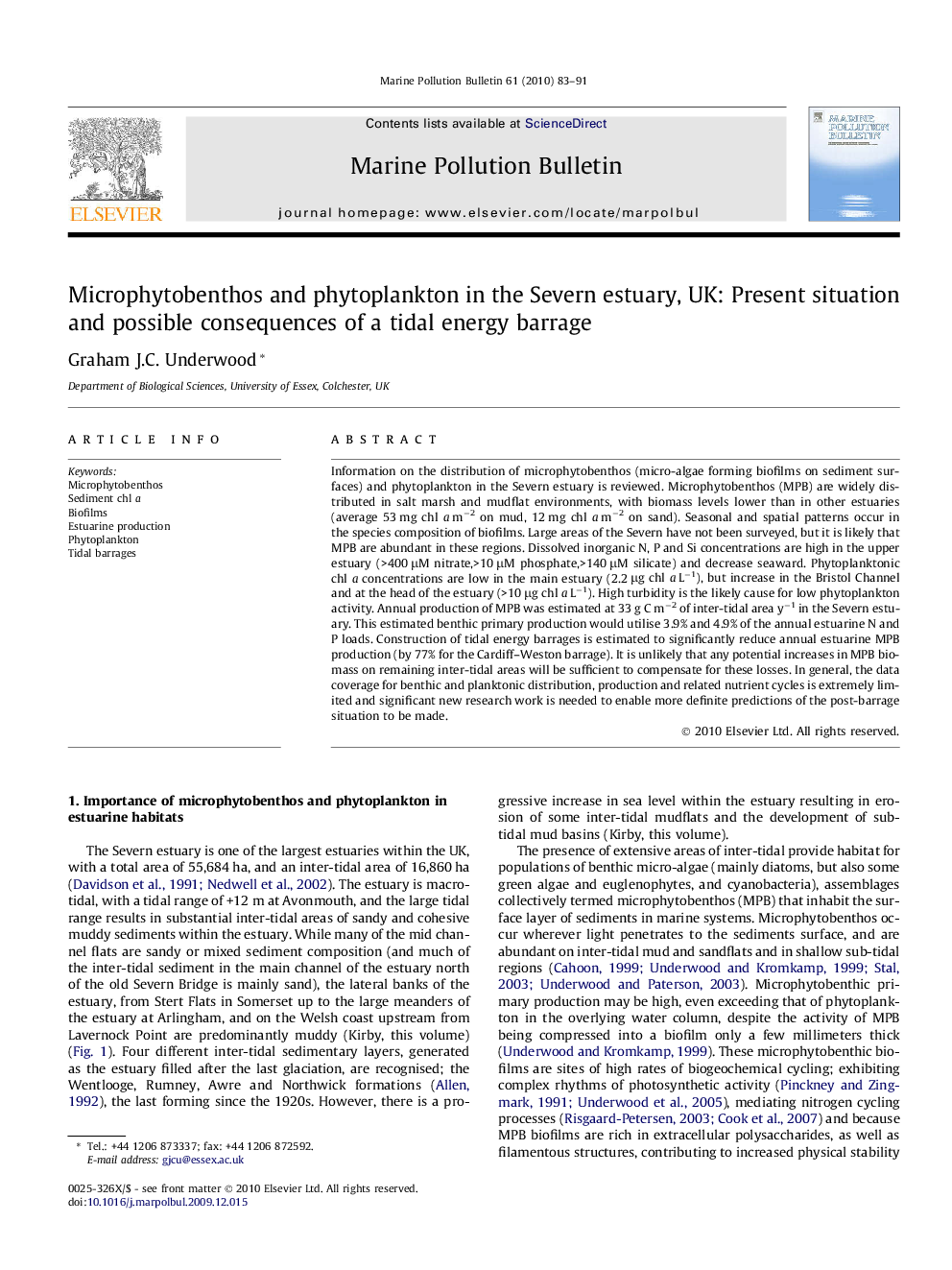| Article ID | Journal | Published Year | Pages | File Type |
|---|---|---|---|---|
| 6361545 | Marine Pollution Bulletin | 2010 | 9 Pages |
Abstract
Information on the distribution of microphytobenthos (micro-algae forming biofilms on sediment surfaces) and phytoplankton in the Severn estuary is reviewed. Microphytobenthos (MPB) are widely distributed in salt marsh and mudflat environments, with biomass levels lower than in other estuaries (average 53 mg chl a mâ2 on mud, 12 mg chl a mâ2 on sand). Seasonal and spatial patterns occur in the species composition of biofilms. Large areas of the Severn have not been surveyed, but it is likely that MPB are abundant in these regions. Dissolved inorganic N, P and Si concentrations are high in the upper estuary (>400 μM nitrate,>10 μM phosphate,>140 μM silicate) and decrease seaward. Phytoplanktonic chl a concentrations are low in the main estuary (2.2 μg chl a Lâ1), but increase in the Bristol Channel and at the head of the estuary (>10 μg chl a Lâ1). High turbidity is the likely cause for low phytoplankton activity. Annual production of MPB was estimated at 33 g C mâ2 of inter-tidal area yâ1 in the Severn estuary. This estimated benthic primary production would utilise 3.9% and 4.9% of the annual estuarine N and P loads. Construction of tidal energy barrages is estimated to significantly reduce annual estuarine MPB production (by 77% for the Cardiff-Weston barrage). It is unlikely that any potential increases in MPB biomass on remaining inter-tidal areas will be sufficient to compensate for these losses. In general, the data coverage for benthic and planktonic distribution, production and related nutrient cycles is extremely limited and significant new research work is needed to enable more definite predictions of the post-barrage situation to be made.
Related Topics
Physical Sciences and Engineering
Earth and Planetary Sciences
Oceanography
Authors
Graham J.C. Underwood,
